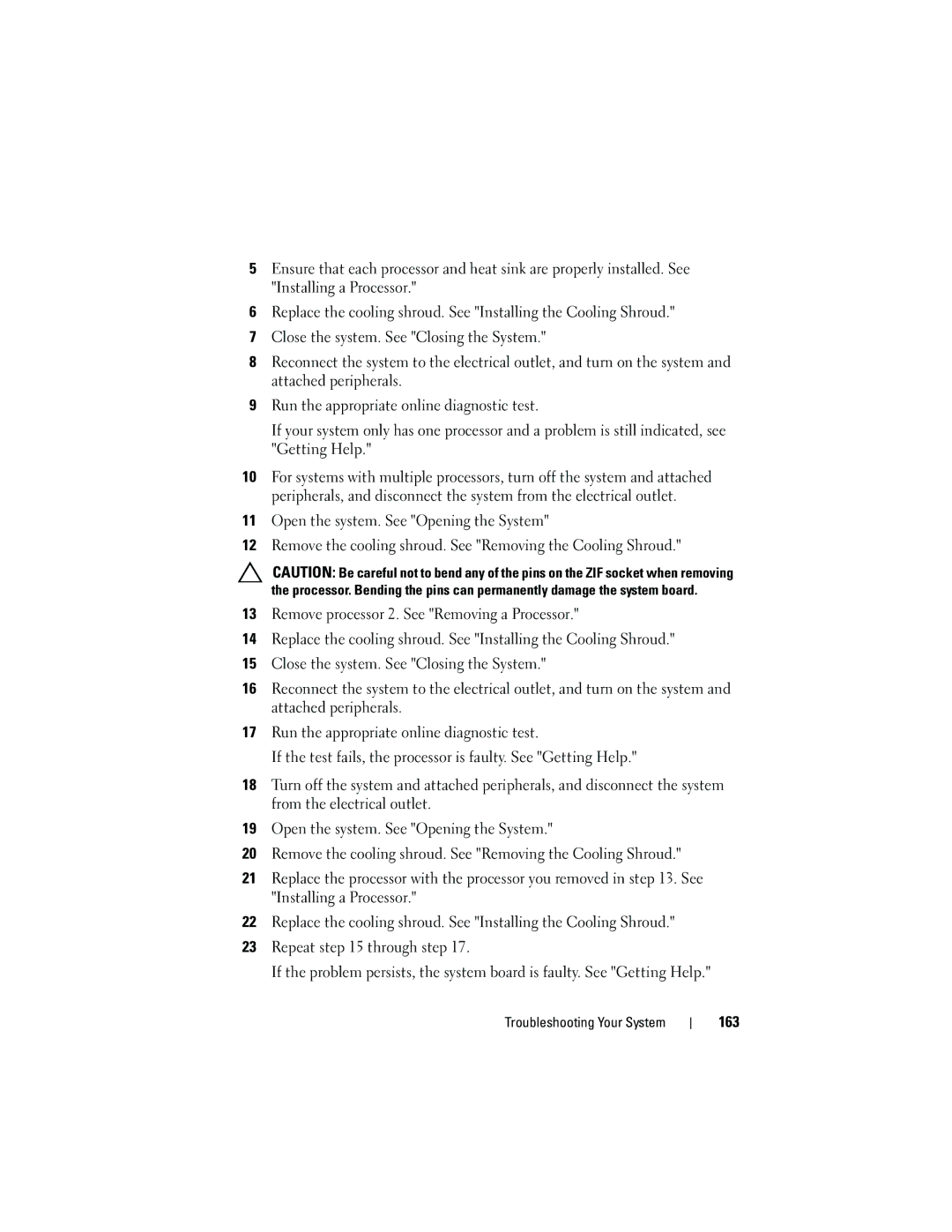
5Ensure that each processor and heat sink are properly installed. See "Installing a Processor."
6Replace the cooling shroud. See "Installing the Cooling Shroud."
7Close the system. See "Closing the System."
8Reconnect the system to the electrical outlet, and turn on the system and attached peripherals.
9Run the appropriate online diagnostic test.
If your system only has one processor and a problem is still indicated, see "Getting Help."
10For systems with multiple processors, turn off the system and attached peripherals, and disconnect the system from the electrical outlet.
11Open the system. See "Opening the System"
12Remove the cooling shroud. See "Removing the Cooling Shroud."
CAUTION: Be careful not to bend any of the pins on the ZIF socket when removing the processor. Bending the pins can permanently damage the system board.
13Remove processor 2. See "Removing a Processor."
14Replace the cooling shroud. See "Installing the Cooling Shroud."
15Close the system. See "Closing the System."
16Reconnect the system to the electrical outlet, and turn on the system and attached peripherals.
17Run the appropriate online diagnostic test.
If the test fails, the processor is faulty. See "Getting Help."
18Turn off the system and attached peripherals, and disconnect the system from the electrical outlet.
19Open the system. See "Opening the System."
20Remove the cooling shroud. See "Removing the Cooling Shroud."
21Replace the processor with the processor you removed in step 13. See "Installing a Processor."
22Replace the cooling shroud. See "Installing the Cooling Shroud."
23Repeat step 15 through step 17.
If the problem persists, the system board is faulty. See "Getting Help."
